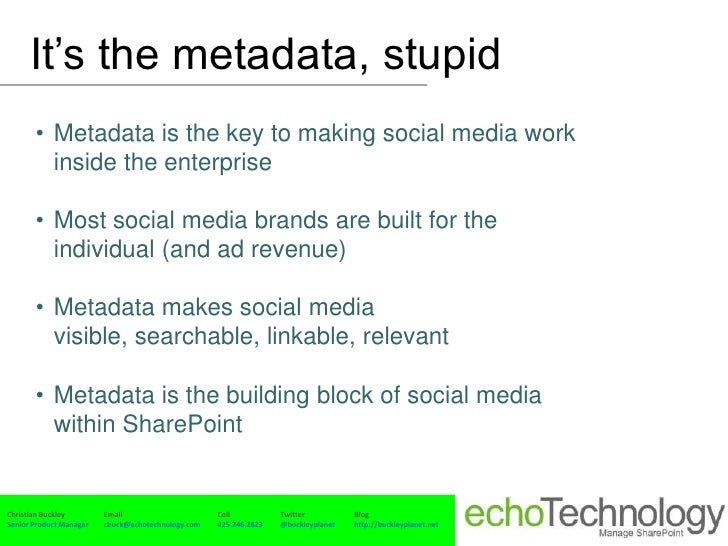

- SOCIAL MEDIA META CHECKER CODE
- SOCIAL MEDIA META CHECKER DOWNLOAD
See How My Agency Can Drive Massive Amounts of Traffic to Your Website For instance, Twitter and Linkedin recognize Open Graph tags Twitter has its own meta tags for Twitter Cards, but if Twitter robots cannot find any, it uses OGP tags instead. Other social media sites are also taking advantage of social meta tags. To make this possible, information is sent via Open Graph tags in the part of the website’s code. Put simply, it helps optimize Facebook posts by providing more control over how information travels from a third-party website to Facebook when a page is shared (or liked, etc.). To start this active learning, grab a copy of our meta-example.html, script.js and style.css files, and save them on your local computer in the same directory.9 Conclusion What Is Open Graph and Why Was It Created?įacebook introduced Open Graph in 2010 to promote integration between Facebook and other websites by allowing posts to become rich objects with the same functionality as other Facebook objects.The main purpose here is to let you know what such things are, in case you come across them while browsing other websites' source code. The comments explain what each icon is used for - these elements cover things like providing a nice high resolution icon to use when the website is saved to an iPad's home screen.ĭon't worry too much about implementing all these types of icon right now - this is a fairly advanced feature, and you won't be expected to have knowledge of this to progress through the course. The contents are also used in search results, as you'll see below. For example, if you try bookmarking the page ( Bookmarks > Bookmark This Page or the star icon in the URL bar in Firefox), you will see the contents filled in as the suggested bookmark name. The element contents are also used in other ways.
You should also try opening the code up in your code editor, editing the contents of these elements, then refreshing the page in your browser. It should now be completely obvious where the content appears, and where the content appears! Next, choose your browser's Save Page As… menu and choose a sensible place to save the file. Press the "Raw" button on the GitHub page, which causes the raw code to appear (possibly in a new browser tab). Copy and paste the code out of the page and into a new text file in your code editor, then save it in a sensible place. To start off this active learning, we'd like you to go to our GitHub repo and download a copy of our title-example.html page. Express Tutorial Part 7: Deploying to production. Express Tutorial Part 6: Working with forms. Express Tutorial Part 5: Displaying library data. Express Tutorial Part 4: Routes and controllers. Express Tutorial Part 3: Using a database (with Mongoose). Express Tutorial Part 2: Creating a skeleton website. Express tutorial: The Local Library website. Setting up a Node (Express) development environment. Express Web Framework (Node.js/JavaScript) overview.  Express Web Framework (node.js/JavaScript). Tutorial Part 11: Deploying Django to production. Tutorial Part 10: Testing a Django web application. Tutorial Part 8: User authentication and permissions. Tutorial Part 6: Generic list and detail views. Tutorial Part 5: Creating our home page. Tutorial Part 2: Creating a skeleton website. Setting up your own test automation environment. Building Angular applications and further resources. Advanced Svelte: Reactivity, lifecycle, accessibility. Dynamic behavior in Svelte: working with variables and props. Vue conditional rendering: editing existing todos. Adding a new todo form: Vue events, methods, and models. Ember Interactivity: Footer functionality, conditional rendering. Ember interactivity: Events, classes and state.
Express Web Framework (node.js/JavaScript). Tutorial Part 11: Deploying Django to production. Tutorial Part 10: Testing a Django web application. Tutorial Part 8: User authentication and permissions. Tutorial Part 6: Generic list and detail views. Tutorial Part 5: Creating our home page. Tutorial Part 2: Creating a skeleton website. Setting up your own test automation environment. Building Angular applications and further resources. Advanced Svelte: Reactivity, lifecycle, accessibility. Dynamic behavior in Svelte: working with variables and props. Vue conditional rendering: editing existing todos. Adding a new todo form: Vue events, methods, and models. Ember Interactivity: Footer functionality, conditional rendering. Ember interactivity: Events, classes and state.  Ember app structure and componentization. React interactivity: Editing, filtering, conditional rendering. Client-side web development tools index. Assessment: Accessibility troubleshooting. CSS and JavaScript accessibility best practices. Accessibility - Make the web usable by everyone. CSS property compatibility table for form controls. Assessment: Adding features to our bouncing balls demo. Introducing JavaScript objects overview. Making decisions in your code - Conditionals. Basic math in JavaScript - Numbers and operators. Storing the information you need - Variables. What went wrong? Troubleshooting JavaScript.
Ember app structure and componentization. React interactivity: Editing, filtering, conditional rendering. Client-side web development tools index. Assessment: Accessibility troubleshooting. CSS and JavaScript accessibility best practices. Accessibility - Make the web usable by everyone. CSS property compatibility table for form controls. Assessment: Adding features to our bouncing balls demo. Introducing JavaScript objects overview. Making decisions in your code - Conditionals. Basic math in JavaScript - Numbers and operators. Storing the information you need - Variables. What went wrong? Troubleshooting JavaScript. 
JavaScript - Dynamic client-side scripting.Assessment: Fundamental layout comprehension.Assessment: Typesetting a community school homepage.Assessment: Creating fancy letterheaded paper.Assessment: Fundamental CSS comprehension.HTML table advanced features and accessibility.From object to iframe - other embedding technologies.Assessment: Structuring a page of content.








 0 kommentar(er)
0 kommentar(er)
